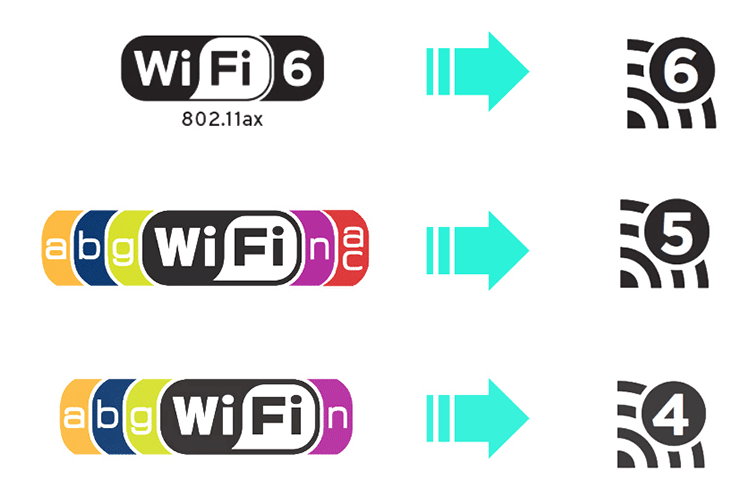World Wi-Fi Day 2023 confirms the importance of this wireless technology
- June 20, 2023
- 0
Wi-Fi is an essential standard that has succeeded in the era of total connectivity in which we live. It is the main technology for creating local area networks
Wi-Fi is an essential standard that has succeeded in the era of total connectivity in which we live. It is the main technology for creating local area networks

Wi-Fi is an essential standard that has succeeded in the era of total connectivity in which we live. It is the main technology for creating local area networks through a wireless link that avoids the need to run cables through homes, businesses or anywhere, as well as for connecting the billions of devices of all kinds that connect to the mobile Internet today using this standard.
The organization responsible for the standard, Wireless Broadband Alliancehe suggested it World Wi-Fi Day will be celebrated every June 20 emphasize the importance of this wireless technology. This day coincides with the anniversary (24 years) when telecommunications giants such as Nokia, 3Com, Airones, Intersil or Lucent came together to create WECA, later transformed into the WiFi Alliance, which currently manages this standard.
Discoveries in the 1940s were the ones that laid the foundation for this wireless technology, and specifically the discovery of broad spectrum, the foundation for protocols like Wi-Fi or Bluetooth. We owe it to an extraordinary womanfrom a Jewish family, born Hedwig Eva María Kiesler in the former Austria-Hungary, who knew how to navigate waters as diverse as those of actresses and engineers.
For the sake of interest, let’s mention that Hedy Lamarr (a stage name suggested to her by her protector Louis B. Mayer, the then tycoon and owner of Metro Goldwyn Mayer) was the first woman in the history of cinema to play nude. More important was his contribution to world telecommunications with the invention of a system capable of detecting remote-controlled torpedoes used by the German fleet in World War II to dominate the Atlantic.

The device was able to operate at 88 frequencies (equivalent to piano keys) and reproduce what we now know as frequency hopping of the spread spectrum. This development provided the technical basis for the next step to be taken in 1971. A computer network called ALOHAnet designed by the University of Hawaii sent various data packets over UHF waves that were used by television channels.
In 1985, the US telecommunications regulator FCC took the definitive step by freeing up the ISM band so that anyone could transmit data wirelessly without licenses or paying license fees. Among other things, it covered the 2.4 and 5 GHz bands, which are the basis of current Wi-Fi. As early as the 1990s, the standard was extended by projects such as wireless transmission between ATMs by NCR and AT&T with WaveLAN technology.
Finally, given the need to create a common standard that would ensure compatibility of network equipment and devices and promote the use of wireless technologies, the giants of this sector came together in WECA, today known as the Wi-Fi Alliance, which includes more than 150 companies.
Creation the IEEE 802.11 industry standard under the trademark Wi-Fi, compatible with all existing local area network LAN services but with wireless packet transmission, was the definitive launch for this technology. Since then, the IEEE 802.11 standard has improved in terms of performance, security, range, new technologies, or expanding the spectrum of use into other radio bands.
Wi-Fi Alliance to help users identify devices (and not the technical nonsense that used to be used) simplified the generation names of the standard remaining as follows:
In addition to the nomenclature, the Wi-Fi Alliance has adopted a new visual model that should appear both on the network device and on the devices that connect to it, instead of the classic versions with letters. Much easier at first glance.

The next version of the standard is already here. Although its final specifications have not been released, several vendors have been anticipating the launch, including chip makers like Qualcomm and MediaTek and device providers like D-Link or Netgear.
Technically named IEEE 802.11be, the new wireless standard is being developed to achieve a extremely high performance (EHT) so we can expect improved transmission speeds, lower latency, better handling of connected devices and spectrum expansion with higher bandwidth channels that ultimately determine the Wi-Fi signal data rate and ultimately increase performance.
The main goal is to create a local wireless network with enough features definitively replace wired networks. Vendors working on the standard say the launch of Wi-Fi 7 will mark the first time Wi-Fi can be a true cable/Ethernet replacement for high-bandwidth applications including Metaverse, remote work, game streaming, cloud computing or virtual/augmented reality. some types of applications that until now have not worked properly on wireless networks.
Between features that can be expected from Wi-Fi 7 protrude:
We expect 2024 to be the year of general adoption of the latest version of the core standard, which we reviewed on World Wi-Fi Day.
Source: Muy Computer
Donald Salinas is an experienced automobile journalist and writer for Div Bracket. He brings his readers the latest news and developments from the world of automobiles, offering a unique and knowledgeable perspective on the latest trends and innovations in the automotive industry.